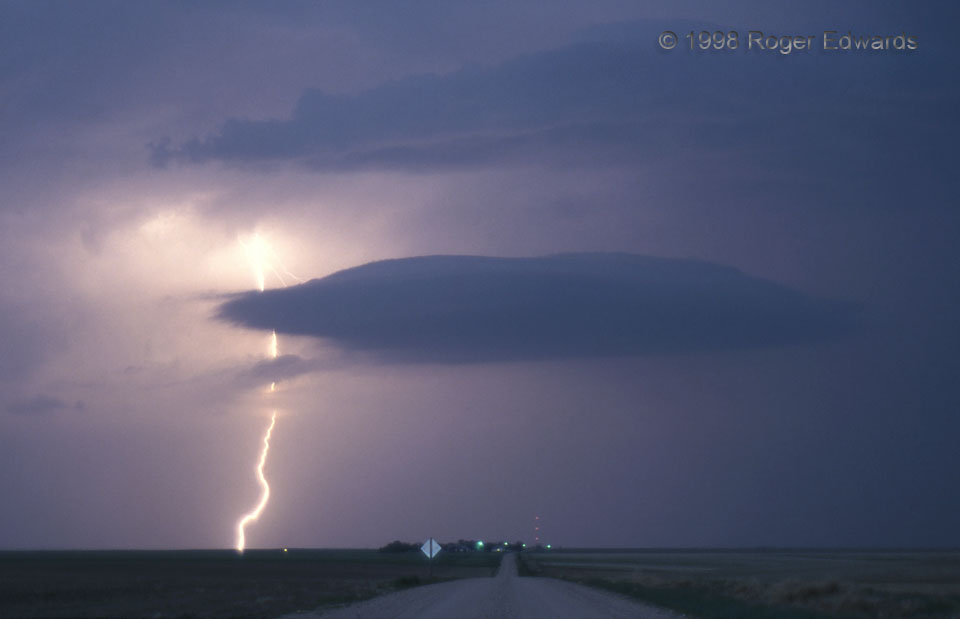In twilight, with a tight aperture and 5–10-second exposures, it is possible to take photos such as this one of a CG stroke behind a lenticular cloud. The origin of the lenticular cloud was not a mountain or standing wave. Instead, it was the detached former base of a dying, high-based supercell—still slowly rotating! Because of its deep-convective origin, I propose a new cloud type: cumulonimbus lenticularis. A very similar process occurred with a different, strongly laminar supercell, in northeast Nebraska on 12 June 94; but I could not get a decent picture of its subsequent lenticular cloud because of a lack of both lighting and lightning.
8 E Joes CO (22 May 98) Looking N
39.659, -102.4803
